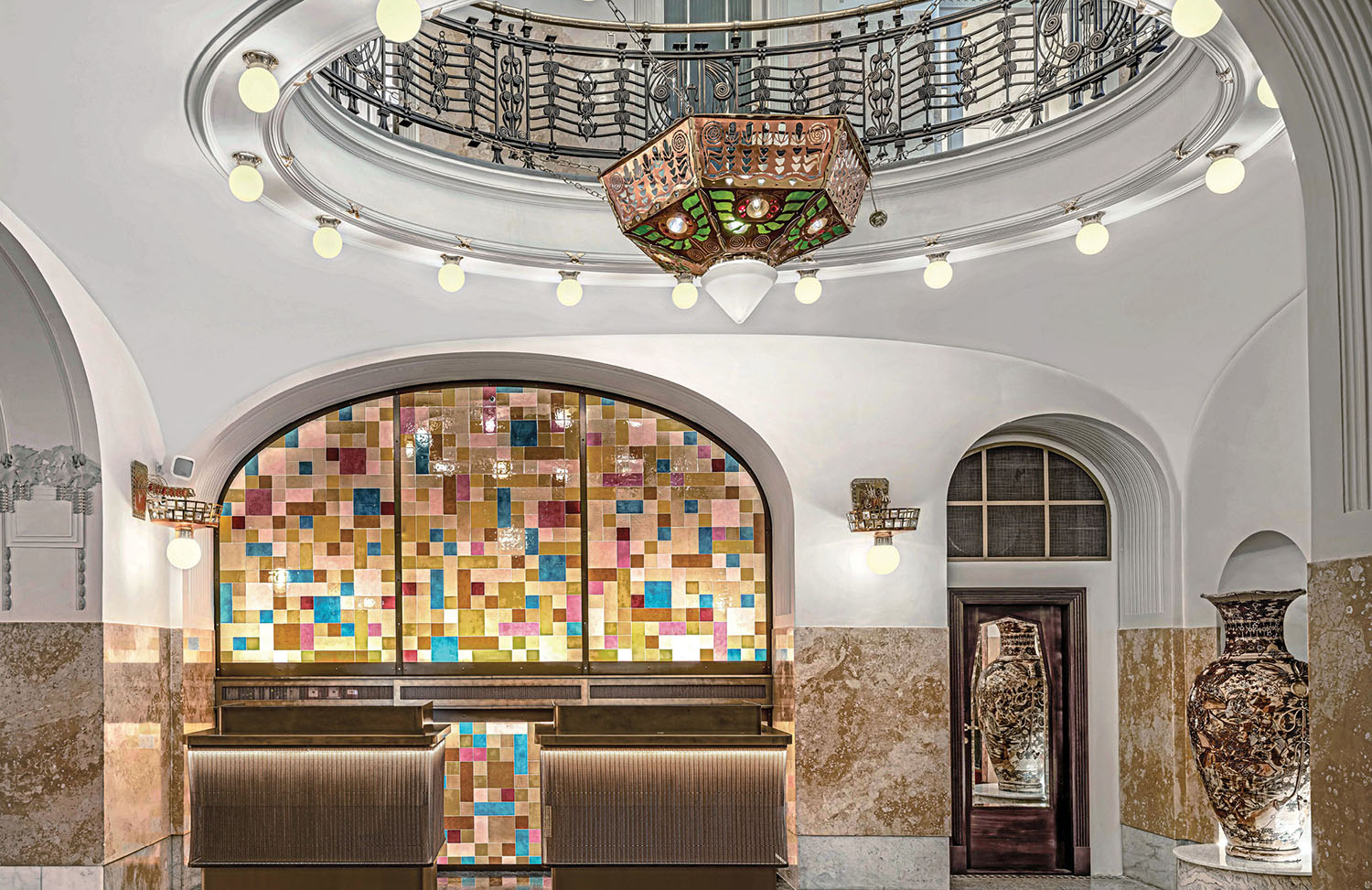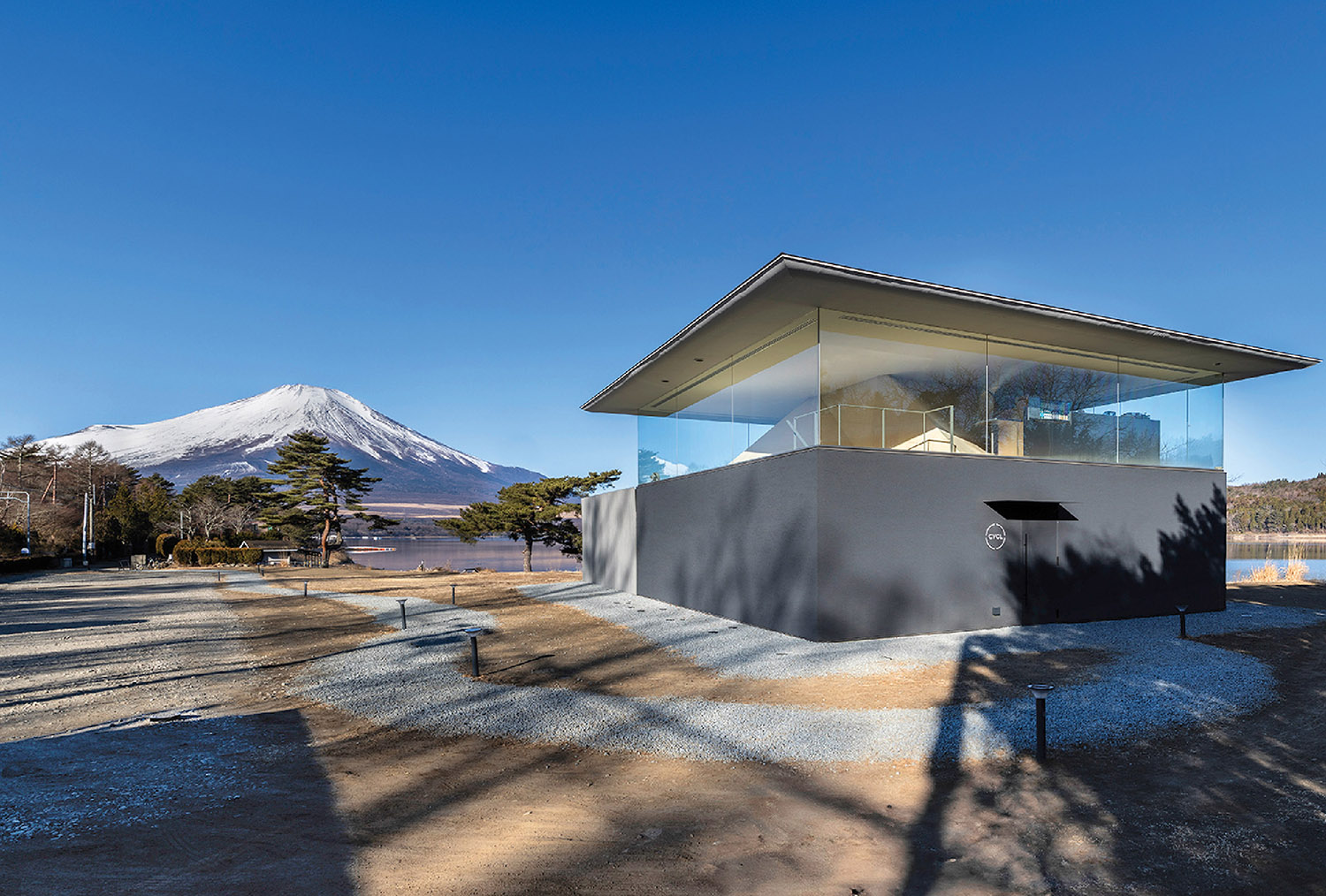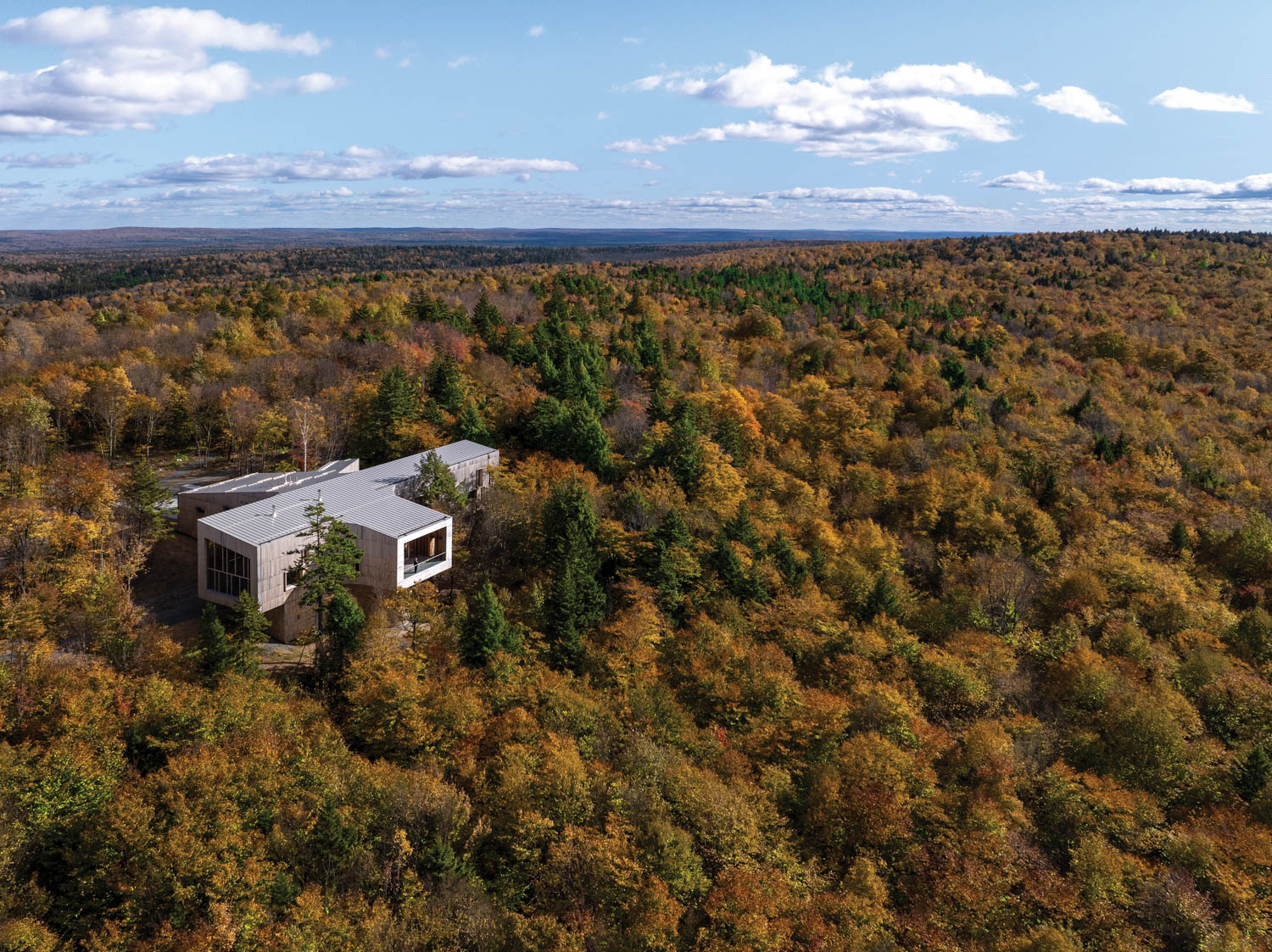Shantell Martin Draws New Life Into an Abandoned Chapel on Governors Island in New York

Protect. Fly. Grow. Think. What do these verbs have in common? Shantell Martin spray-painted them on Church, her exterior building installation on Governors Island, the 172-acre, former military base a 1/2 mile ferry ride from downtown Manhattan. Since 2017, the Trust for Governors Island has been commissioning temporary public-art installations for the summer season and was who invited Martin out last winter to choose her site. “To keep our program agile, we look for artists of all backgrounds and stages whose work will respond to the island,” the trust’s vice president of arts and culture Meredith Johnson says of such facade words as “Lenni Lenape” and “Pagganuck” that nod to the island’s past. But she’s also referring to the structure’s interior, which, having been built during World War II as Our Lady Star of the Sea, a Roman Catholic chapel serving the U.S. Army members staying on the base then, was originally a place of reflection, meditation, and community—and is again today, courtesy of The May Room, Martin’s inside artwork.

“I picked the chapel because it was like the perfect blank, white canvas,” Martin recalls from her initial visit. “But also, I’d been wanting to create a contemplative space for a long time,” continues the artist, who’s done collaborations with Kendrick Lamar, Puma, and Momentum Textiles. “And that it had been abandoned for over 20 years, and was damaged by Hurricane Sandy, it was a chance to give it a second life.” When the U.S. Coast Guard ceased operations on the island in 1996, the building was deconsecrated and closed to the public. Although marred inside and out, its original stained-glass windows were intact, and it’s one of the site’s few non-landmarked buildings, both of which made the chapel further appealing to Martin.

She began on the interior in her signature black-and-white graffitilike fashion, drawing letters, lines, and faces on walls, but leaving the rear one blank. She mapped out the floor as a sort of path, peppering it with the words “may,” “you,” “find,” “self,” and “way,” and surrounded it by benches CNC-cut in the shape of individual letters. Then, one night she dreamt that the back wall would be full of wishes—dozens of them: May you hear laughter. May you find clarity and guidance. May you see beauty. “May is not an order or a direction. It’s a positive intention, a wish for the visitors that’s reflected into them the longer they stay,” Martin explains of perhaps her most thoughtful work to date, adding that, “May is also my middle name.”
Keep scrolling to view more images and videos of the installations >
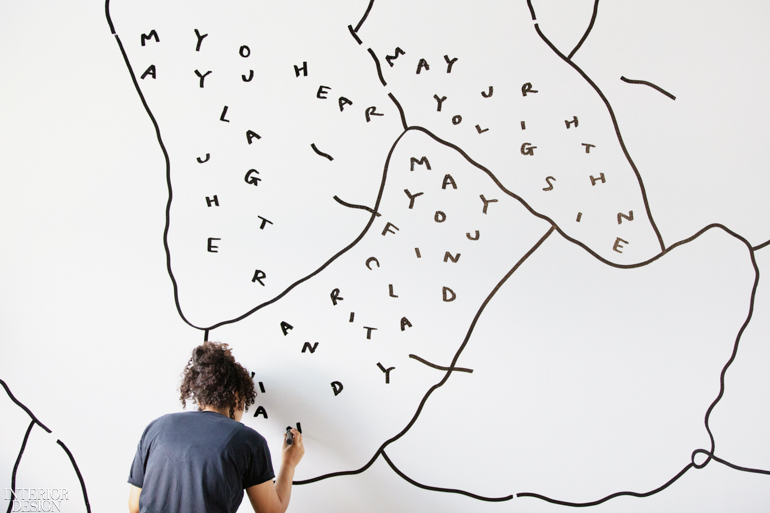



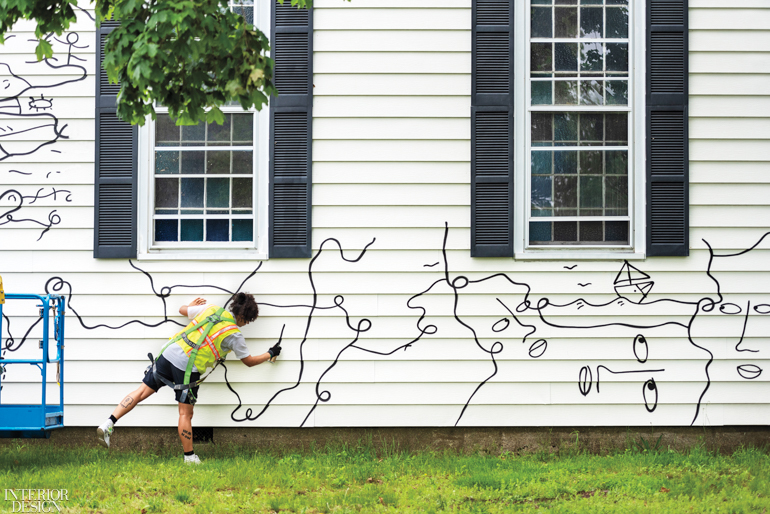

Watch time-lapse videos of the installations:
